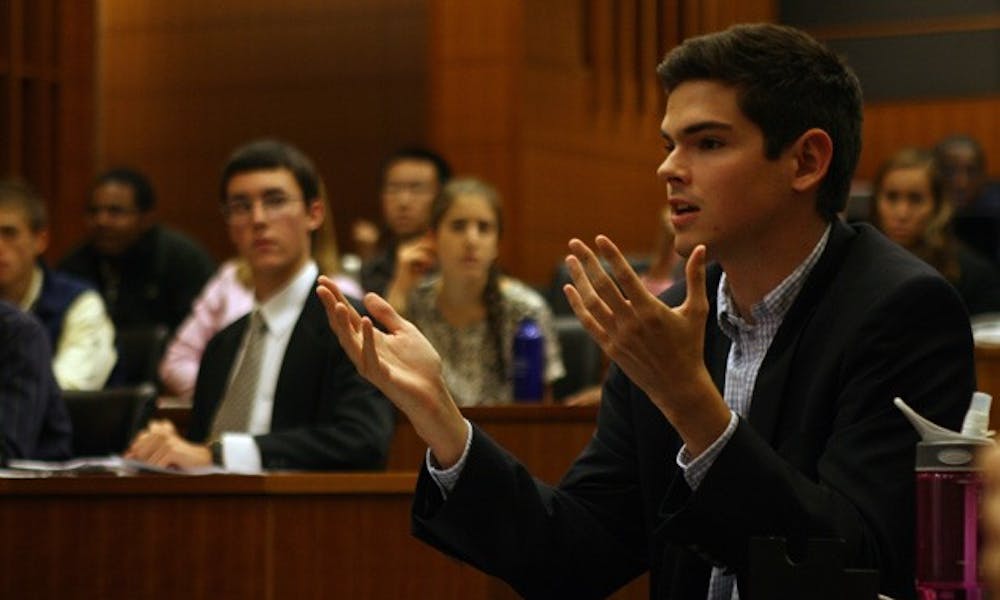Duke Student Government presented an alternative house model proposal at its town hall meeting Wednesday night.
The DSG proposal for the house model—referred to as “continued community”—seeks to foster a sense of community by creating half-quad houses based on freshman residence hall affiliations. In contrast to the current house model plans, which will take effect Fall 2012, unaffiliated sophomores and juniors would move into houses on either West or Central Campuses based on freshman dorm affiliations.
“We realize this is far more limited compared to the model we have right now,” Executive Vice President Gurdane Bhutani, a junior, said. “But at the same time we think it’s a pretty significant step up from the house model that’s going to be put in place no matter what we do.”
It is unclear how plausible changes to the house model are from an administrative perspective.
“We haven’t had any conversations [with DSG about the proposal]. I think there are some challenging realities with what I understand of it,” Joe Gonzalez, associate dean for residence life, said in an interview. “We’re at a point where it’s difficult to substantively change what’s been designed.”
The DSG continued community house model proposal is intended to address perceived deficiencies in the house model, including the placement of independent students in random houses. DSG President Pete Schork, a senior, said this randomization could make it difficult for older students to form connections with their houses.
“When you’re a sophomore, you already have your best friend groups, you already have your commitments on campus, and you’re being asked to start over when you join a house,” Schork said.
For students who do not feel an affinity toward their freshman residence hall, applications would be available for transfer into different houses.
“If you apply to leave your house, and you are accepted into a new house, you then have to take the new spot,” Bhutani said, in response to concerns that students would be compelled to transfer houses in order to live in a better location.
“The issue with Duke is that none of our dorms are created equal,” he added. “We have some crappy dorms, and we have some really nice dorms, and that’s just the way it is.”
DSG plans to administer a campus-wide survey to determine the percentage of students interested in supporting the DSG house model proposal.
Senior Christina Lieu, vice president for athletics, services and the environment, said she did not anticipate students having strong objections to the DSG model’s departure from the blocking system.
“It is our impression from talking to students that the people students choose to block with are students they lived with their freshman year,” Lieu said.
Schork said the proposal is incomplete, but expressed his hope that the meeting would serve as a starting point for further dialogue.
“[Support from the administration] is going to be up to the amount of student momentum behind [the DSG proposal],” he said. “If students really embrace any changes to this model wholeheartedly, it’s going to be hard to turn down.”
Bhutani said it is important to consider a variety of residential models.
“The only way for us to have an effective conversation about the housing model is if there are more choices,” he said.
At the conclusion of the meeting, DSG senators and attendees of the forum voted 33-2 in favor of the DSG house model proposal.
Senior Esosa Osa, vice president for residential life and dining, said DSG has a responsibility to represent student voices in the housing debate.
“It’s our job—if we feel like there’s a better option—to present it to the administration,” Osa said. “If we feel like students want it, we should be behind them 110 percent.”
Anna Koelsch contributed reporting.
Get The Chronicle straight to your inbox
Signup for our weekly newsletter. Cancel at any time.

